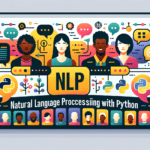Data is invaluable in the modern business landscape. However, more than access to data is required. The value lies in how we use it to guide decisions. By blending quantitative insights with qualitative expertise, businesses can improve processes, cut costs, and enhance customer experiences.
A robust decision-making model combines data, expert analysis, and collaborative input, focusing on understanding problems, making informed choices, and assessing outcomes. By following a structured, outcome-based approach, organizations can leverage data to make decisions and drive meaningful change.
What is Data-Driven Decision-Making?
Data-driven decision-making (DDDM) involves using data to guide various business choices. There are several types of decisions where DDDM plays a crucial role:
- Operational Decisions are short-term actions influencing daily tasks, like resource allocation or scheduling.
- Strategic Decisions: These are long-term and align with the organization’s overall vision, such as product development or market expansion.
- Analytical Decisions: Analytical decisions address complex issues, using evidence to explore possible solutions and evaluate their impact.
At its core, DDDM involves backing insights with data. For insights to be actionable, the supporting data must be reliable and contextual. Evaluating data regarding the problem, decision options, and environmental factors allows for more comprehensive and informed choices.
Critical Steps in Data-Driven Decision-Making
Only some decisions are straightforward; many complex choices require careful consideration of three primary components: environment, information, and impact. Here’s a step-by-step outline of the process:
- Defining the ProblemTo solve a problem effectively, it’s essential to understand it thoroughly. This means assessing the environment, considering the issue’s impact, and understanding the timelines involved. Different problems may require varying resources and time, distinguishing operational issues from strategic challenges.
- Gathering Relevant DataDecision-making data should be up-to-date, complete, and evidence-backed. Effective decisions rely on a mix of quantitative and qualitative data. Data validity and timeliness are crucial, as accurate or updated information can skew outcomes. This ensures that decisions align with current realities, avoiding reliance on outdated patterns or trends.
- Evaluating the OutcomeAssessing the impact of a decision is vital. Did the results meet expectations? Analyzing outcomes lets teams learn from successes and missteps, refining future choices. Balancing quantitative insights with human experience is equally important to maximize understanding.
Modern tools like AI enhance the ability to interpret and analyze data, presenting new opportunities for integrating unstructured, qualitative information. While technology can assist in data handling, human expertise remains irreplaceable in drawing meaningful conclusions.
Unlocking the Value of Data with Insights
Judith Doherty, Insight Account Director at CDS, emphasizes that data isn’t just numbers; it includes insights that help interpret complex situations. Value is derived from data when businesses understand its potential and use it wisely.
The practical applications of data are vast. From optimizing operations to forecasting risks, the possibilities are extensive. Here’s a closer look at how data is used in specific business functions:
- Operations OptimizationData is integral to improving efficiency in business operations. Organizations can streamline workflows and enhance performance by analyzing processes, identifying gaps, and pinpointing opportunities. For example, data-driven supply and demand forecasts enable better planning, reducing risks of overstocking or shortages.
- Strategic Decision-MakingData guides decision-making at every level, from everyday choices to major strategic pivots. By integrating quantitative analysis with insights, organizations can better understand the “what,” “how,“ and “when“ of their operations, supporting informed, strategic decisions.
- Continuous Improvement Roundtable participants shared numerous examples of how data improves various facets of business, from automating routine tasks to informing complex strategies. Objective data fosters accountability and strengthens stakeholder relationships, helping organizations pivot from opinions to evidence-based insights.
Finding and Enhancing Data Value
To maximize the value of data, businesses should focus on three aspects:
- Risk Assessment Understanding the risks associated with incorrect or missing data is essential. For instance, sales forecasts might lead to financial losses, while accurate performance metrics could cause operational missteps.
- The reusability of data data can often serve multiple purposes, increasing its value. For example, user activity metrics on an e-commerce site may inform page design and product promotion strategies, maximizing the use of existing data.
- Facilitating Continuous ImprovementData-driven improvement involves regularly assessing what is known, exploring new insights, and refining approaches. For example, feedback on user experiences can help explain behaviors, such as why users exit a page. Minor adjustments based on such insights can lead to significant, long-term enhancements.
Rather than feeling overwhelmed by vast data quantities, businesses should focus on manageable, incremental changes. This “marginal gains“ approach encourages tackling issues in smaller parts to identify practical solutions.
Building a Culture of Data-Driven Improvement
To truly benefit from DDDM, organizations should foster a collaborative, transparent culture where data is accessible to everyone. When employees and departments share data freely, the entire organization benefits from a comprehensive view, breaking down information silos. As Geoff Barraclough, Director of Data Services at CDS, noted, “Data is a socialist construct…the value lies in sharing it freely.”
A data maturity model can help businesses assess their current data capabilities and identify areas for improvement. As they grow more data-mature, companies can progress through the following steps:
- Starting small, manageable projects creates a foundation for building trust through data-driven methods. Organizations can lay the groundwork for more significant, impactful initiatives by focusing on fundamental metrics and ensuring data quality.
- Measuring ImpactReliable measurement of outcomes strengthens the case for further data investments, enabling businesses to benchmark performance and track progress.
- Building AdvocacyEngaging advocates within the organization ensures broader support for data initiatives. Starting with more minor, impactful projects can win over stakeholders, creating momentum for more considerable data-driven changes.
Conclusion
Data-driven decision-making transforms how businesses operate, plan, and deliver data science projects by aligning data with strategic insights, organizations can make better, more informed decisions across all levels, from day-to-day operations to long-term strategies. Adopting a problem-decision-outcome model provides a structured path for contextualizing issues, ensuring data quality, and measuring impacts.
Although technology, such as AI, advances data interpretation capabilities, human insights remain essential. Organizations must cultivate a culture of collaboration, valuing every voice and utilizing data fully. By prioritizing risk, reusability, and continuous improvement, businesses can harness data to drive sustained growth and innovation.



